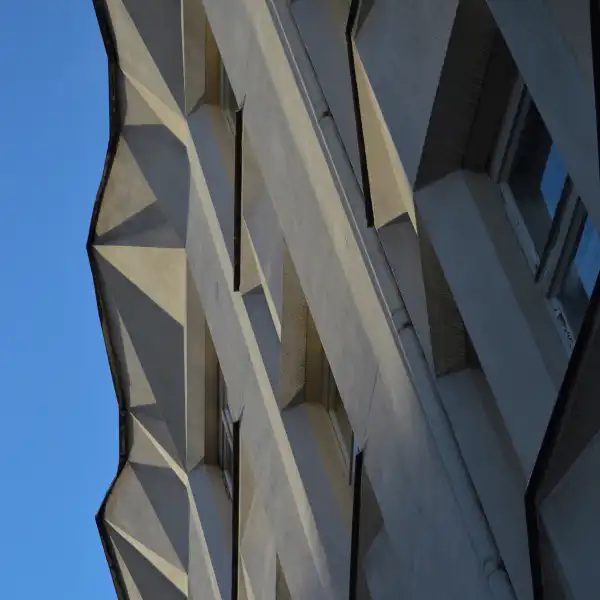Functionalist Route
To or for new architecture?
It was the beginning of the 20th century. In architecture, there was a dominance of alternating earlier historicizing styles, and those who combined them the most prevailed. The level of construction was high, but due to enormous demand, often low-quality buildings were constructed. Then came the First World War, leaving cities destroyed and a horror of human losses. In response to this heightened situation, a theory by a Swiss architect emerged, presenting architecture as a “well-oiled machine.” A machine for living. Le Corbusier aimed to start anew in such circumstances, with a clean slate and a better approach. The cover of his book “Towards a New Architecture” features the deck of an ocean liner, which accurately describes how the new post-war style should look – shifting towards technicism, which is perfect in its functionality and simplicity.
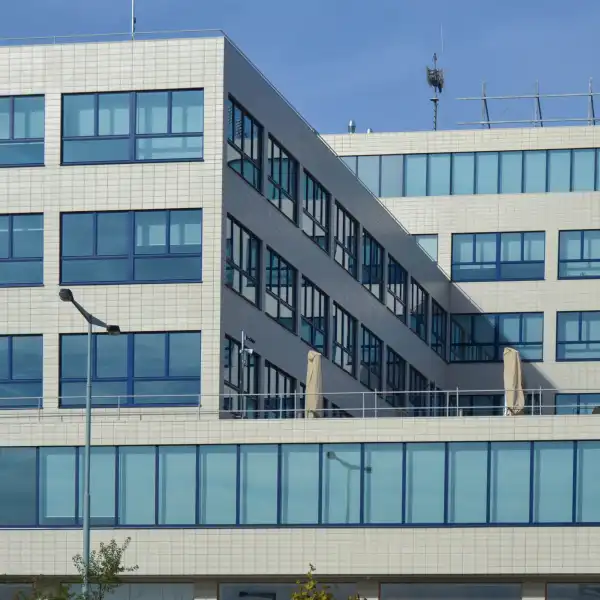
Duration:
30 minut
Number of stops:
6+5
Lenght:
3,2 km
MHD start:
Vltavská
MHD end:
Sparta
Prague Electric Works
Architect: Adolf Benš, Josef Kříž
Year of completion: 1935
The building of the Prague Electric Works emerged from a public architectural competition and was considered the largest administrative building in Prague. It embodies the pure style of functionalism, which in the 1920s was more typical for the suburbs of Prague. The extensive structure consists of several cubic volumes that gradually narrow from the ground floor, allowing sunlight to penetrate into most parts of the building. Access to natural light is crucial for the entire construction, achieved through ribbon windows and Luxfer glass ceilings. The central hall with its main staircase and milk glass wall is impressive and was one of the first double-glazed windows in Bohemia. The entire building was fully electrified and featured state-of-the-art equipment for its time. Examples include an air heating and ventilation system, one of the first prototypes of air conditioning, and the legendary paternoster elevators. For many years, the building remained abandoned until recently when it underwent a sensitive renovation led by studio TaK Architects.

Veletržní Palace
Architect: Oldřich Tyl, Josef Fuchs
Year of completion: 1928
The Veletržní Palace originally served as the headquarters of the Prague Trade Fairs and later as the center for foreign trade. At the time of its construction, it was considered the largest building of its kind in the world. In 1976, a massive fire struck the palace, causing significant damage. However, the building underwent extensive reconstruction and is now home to the National Gallery Prague. The gallery is filled with natural light, especially through ribbon windows, glass walls, and the ceiling of the main hall. Although the structure appears highly symmetrical, it is actually built on an irregular floor plan, and its height varies according to the terrain. To achieve a sense of symmetry, even the axial distances between columns differ. This creates the illusion of perfect regularity, despite there being practically no right angles in the building’s layout.
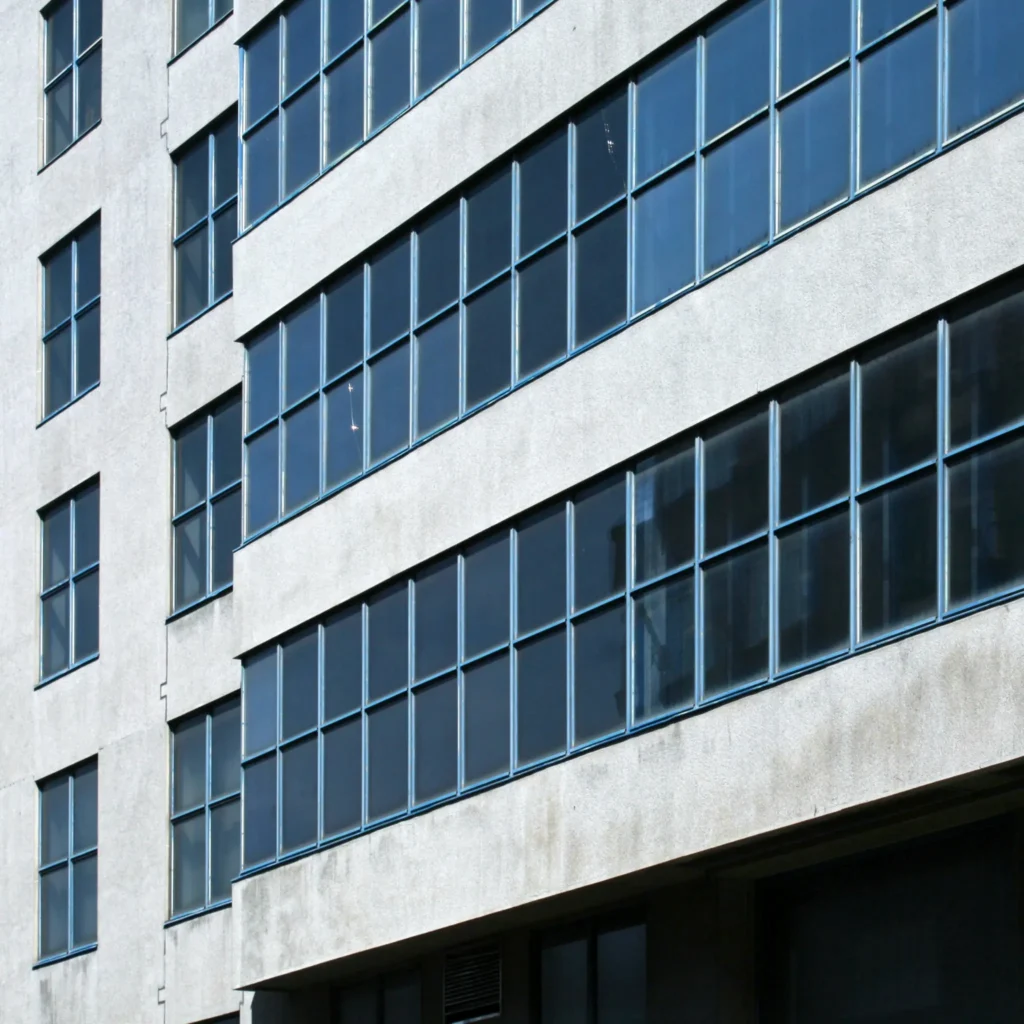
Bio Oko and the surrounding rental apartment buildings
Architect: Josef Šolc, Jaroslav Stockar-Bernkopf
Year of completion: 1940
The apartment block of the Pension Fund of the Employees of the Czechoslovak National Bank was very modern and full of amenities for its time. Electricity, which was cheaper due to the nearby power plant in Holešovice, provided heat, light, and operational energy to the apartments. The block consists of two seven-story wings with a central connecting building. Each part of the block cascades in a stepped manner, and each section is unique in its height and internal layout of the apartments. Some rooms are so atypical that special apartment accessories had to be designed for them, such as hexagonal bathtubs. The Oko Cinema, located in the middle building, was opened in 1940, and many original interior elements are still preserved in various parts of the cinema, such as the mosaic flooring, terrazzo cladding, stairway steps made out of white marble, and aluminium railings.

National Technical Museum and National Agricultural Museum
Architect: Milan Babuška
Year of completion: 1938
The pair of functionalist buildings of the National Technical Museum and the National Agricultural Museum were originally intended to be located at the site of the Trade Fair Palace or the Molochov tenement complex. However, the plots of land on Kostelní Street were eventually acquired, where one majestic building for both museums was supposed to be built. However, the State Regulatory Commission demanded that the elongated structure be interrupted by a street, and disagreements arose between the institutions regarding the interior layout. In the end, two buildings in the shape of a U and an L were constructed, separated by Muzejní Street, which was meant to be bridged by a symbolic gate with a stone inscription. However, due to constant disputes, this plan was eventually abandoned. The misfortune with the museum buildings continued during their construction, which took place during the Protectorate when both structures were confiscated by the Nazis. The original plan by architect Babuška gradually faded away under layers of German realism and was later partially demolished. It was partially restored only after the revolution in 2003 when the building underwent reconstruction, aiming to bring it closer to the ideals of the design from the 1930s.

Molochov
Architect: Josef Havlíček, Otto Kohn, Karl Kohn
Year of completion: 1938
The majestic complex of fourteen six-story tenement houses is known as Molochov. The term likely originated from the poor experience of local workers, but it may also have arisen due to the incredible mass that lines Letná Plain, represented by the 250-meter-long building. The complex was built in the 1930s according to the design of seven architects. Later, the State Regulatory Commission decided that all the houses would have a unifying facade, designed by architect Josef Havlíček. However, the other participating architects who were supposed to design the individual houses did not miss the opportunity to contribute to the construction. They left their mark on the interiors, which differ in size and internal layout. The entrance halls and small details on the entrance doors are also diverse. The most magnificent entrance, designed by architects Ernst Mühlstein and Victor Fürth, is even lined with white Carrara marble, and the entrance doors are made of polished chrome.

Zastávky mimo trasu

Dr. Edvard Beneš Gymnasium
Architect: Evžen Linhart
Year of completion: 1938
The current building of the Higher Vocational School of Education and Social Sciences, the Secondary Vocational School of Education, and the European Gymnasium was once among the largest in Czechoslovakia. The aim of architect Linhart’s design was to create a building that would provide the most pleasant environment for learning. The five-story gymnasium has a reinforced concrete skeleton, an L-shaped floor plan, and strip windows that allow sunlight into the well-ventilated interiors. The large windows on the southern side of the building belong to the classrooms, while the smaller ones facing European Street belong to the hallway with lockers. The interior is notable for its rhythmic layout and the visually expressed structural system of the building. The solution of details such as the railing termination, the canopy above the main entrance, or the central staircase is also remarkable.

French schools
Architect: Jan Gillar
Year of completion: 1934
An exceptional complex of school buildings was created in the early 20th century when the popularity of the French language significantly increased in Bohemia. Therefore, in 1931, the Society for French Language Education announced an architectural competition, which was won by Jan Gillar with his design of a relaxed system of functionalist pavilions for a gymnasium, a secondary school, a kindergarten, a gymnasium, and a boarding house. Unfortunately, this design remained only on paper. The goal was to create an environment where a child spending a certain part of the day at school would feel as free as possible and have ideal conditions for learning. The greatest attention was given to light in the buildings, with large windows designed on the non-sunny side and smaller, sunlit windows on the opposite side. All surfaces were carefully calculated to provide students with a comfortable amount of light. In the pavilion for the primary school, the teaching was adapted for young children and partly took place outside on extended terraces, which, together with strip windows and a white facade, are characteristic elements of this gem of Czech functionalism.

Baba colony
Architect: Pavel Janák, Josef Gočár, Josef Fuchs, František Zelenka, Hana Kučerová-Záveská, Ladislav Žák, Evžen Linhart, Mart Stam
Year of completion: 30. léta 20. století
Baba colony is a modern villa district from the 1930s. It was an experimental showcase colony designed to demonstrate how people could live in the capital of Czechoslovakia. The settlement followed in the footsteps of the previous Weissenhof exhibition in Stuttgart, which laid the foundations of functionalist architecture. The difference from the Weissenhof colony was that all the Prague villas had investors from artistic circles. The driving force behind the entire construction project in Baba was architect Pavel Janák, a leading figure of the Czechoslovak Work Federation, who, in 1928, created an urban concept of a checkerboard-like layout to ensure that individual houses did not obstruct the view of Prague and that residential spaces would absorb as much sunlight as possible. Prominent figures of Czech architecture, such as Ladislav Žák, Evžen Linhart, and Josef Gočár, were involved in the design of the villas. The only foreign architect was the avant-garde Dutch architect Mart Stam, who captivated builder Jiří Palička at the Stuttgart exhibition so much that he requested Stam to design his own villa. Thanks to the collaboration of enlightened architects, builders, and equally progressive-minded investors, a unique collection of modern villas was created.

Mánes Exhibition Hall
Architect: Otakar Novotný
Year of completion: 1930
One of the icons of the Vltava river embankments is the functionalist building standing on the site of the former Šítkovské Mills. It was created for the needs of the Mánes Association of Fine Artists, which had long lacked its own exhibition spaces and facilities. The association was founded in 1887 and had been waiting for such a building until 1930 when its operations began with the exhibition “One Hundred Years of Czech Art 1830-1930.” The controversial design of the hall, by Otakar Novotný, follows the layout of the former mills, as one of the city’s conditions was to preserve the flow of the Vltava river underneath the building. The entire structure is elevated on a reinforced concrete bridge. The functionalist building, with light permeating through roof skylights, large strip windows, luxfer glass, and the entire ground floor, is not only admired by architecture enthusiasts but has also served as a meeting place for artists since its establishment.

Radost House
Architect: Josef Havlíček, Karel Honzík
Year of completion: 1934
Although city regulations required block development in the area where the Radost House stands today, you will not find a residential block there. The bold and radical approach of the freshly graduated architects Josef Havlíček and Karel Honzík convinced the jury in the architectural competition. Their design was chosen, showcasing the progressiveness of the client and the architects themselves. The building is innovative in its concept of providing air and light, which, thanks to its cruciform layout, reaches most of the offices for a significant part of the day. This could never have been achieved in a block development. The building radiates functionalism from all sides, and besides strip windows, one can also find period interiors. The facade is adorned with light tiles from the Rako brand, complemented by wooden window frames and blue accents. Radost House is often referred to as the first skyscraper in Prague because until 1937, it was the tallest building in Czechoslovakia.

Garden route

Feminist route
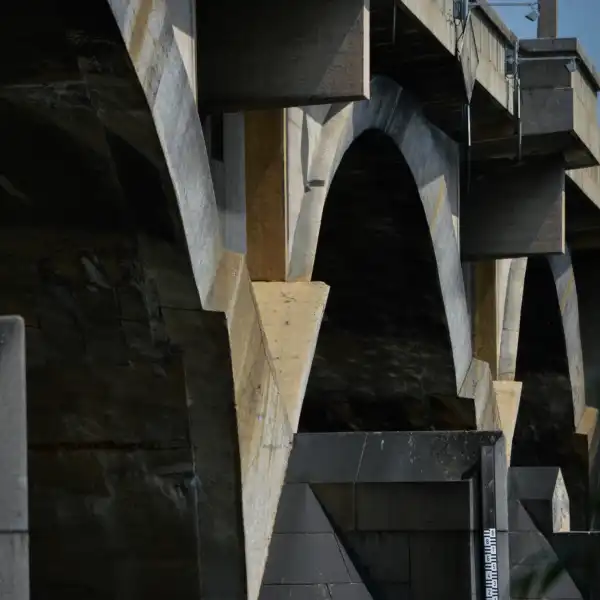
Bridge Route

Passage Route
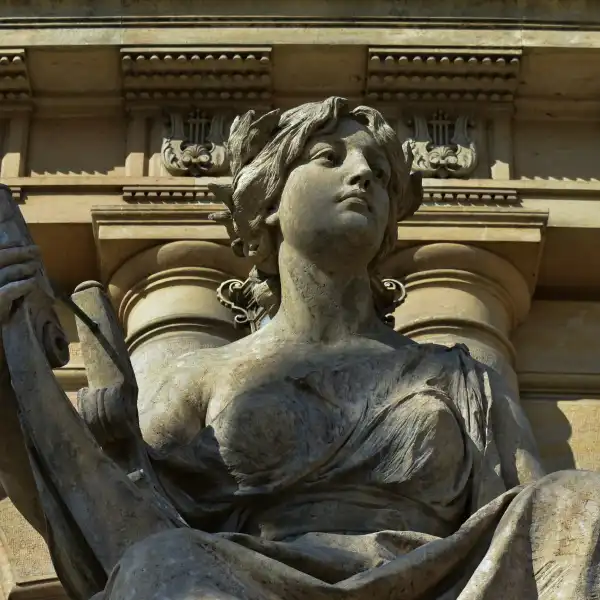
Music Route

Church Route (1930s)

Prager’s Route
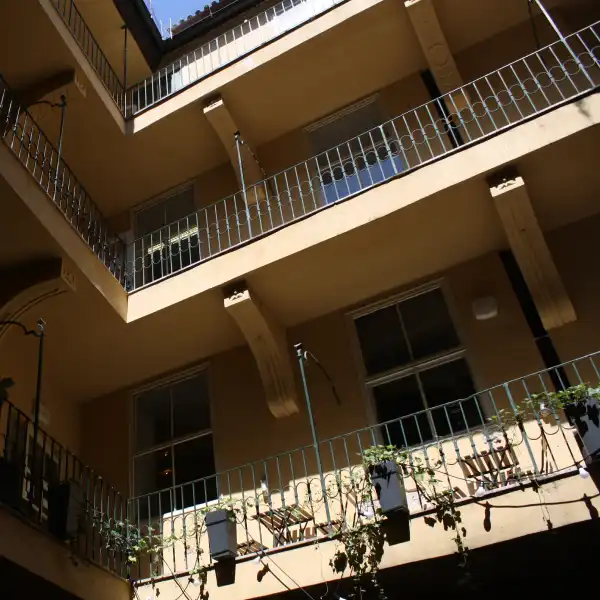
Inner Courtyard Route

Glass Route

Empty Route

Literary Route

Brutalist route
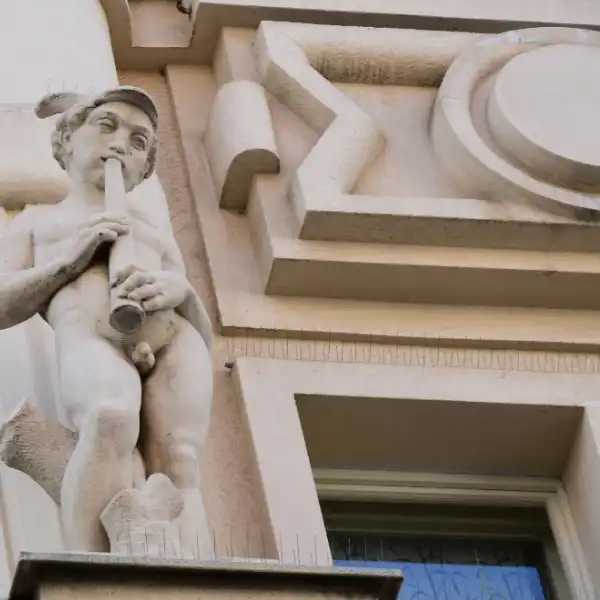
Rondocubist route
